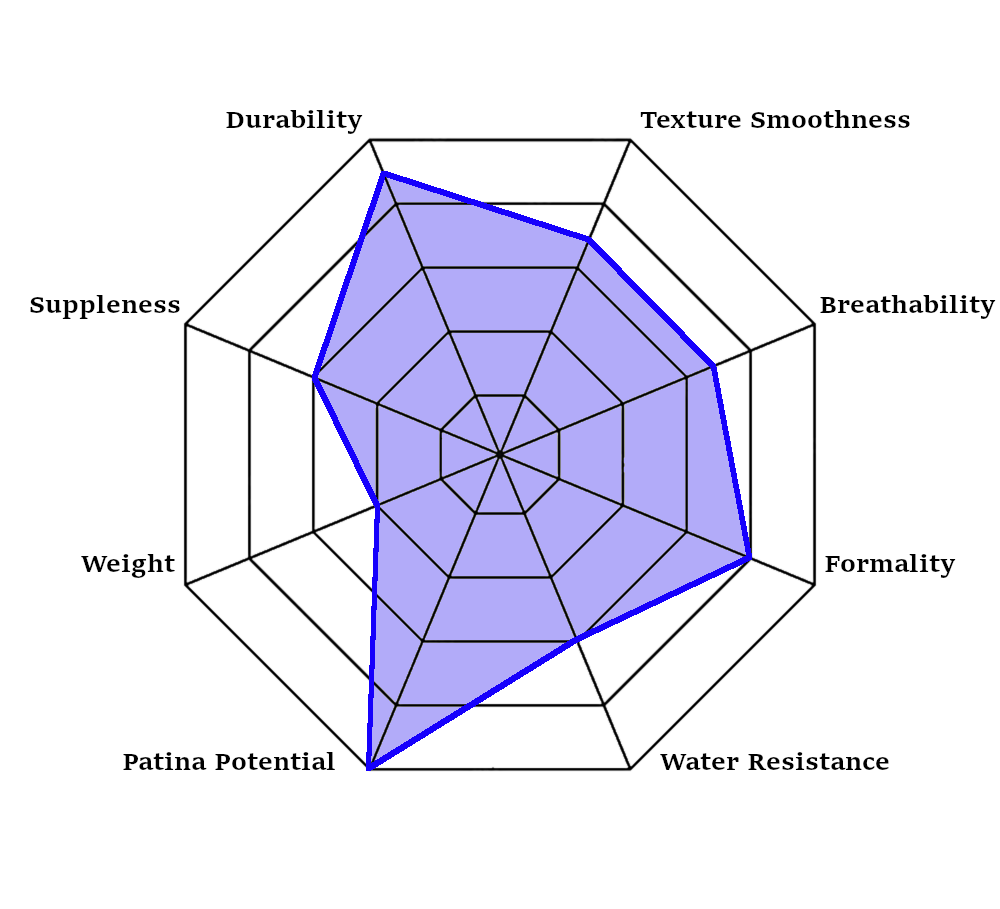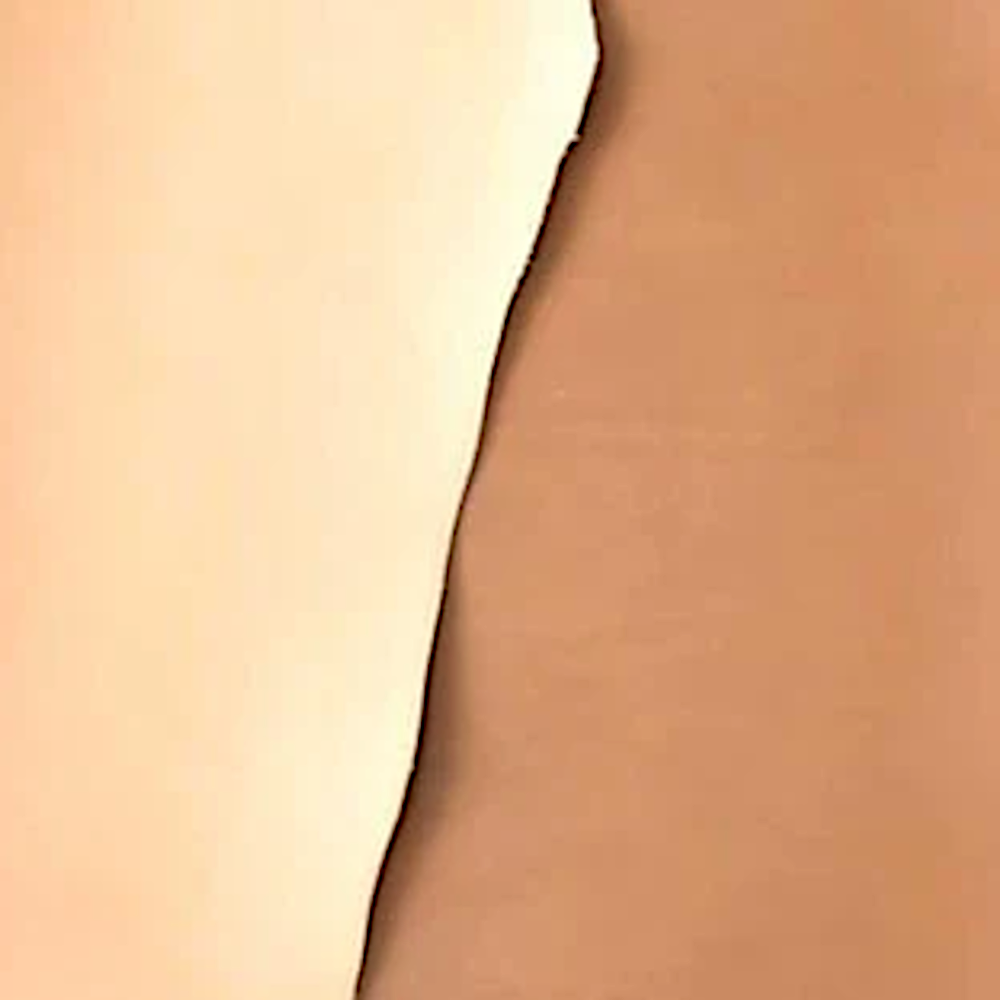
Full Grain Leather
Considered the highest quality leather, Full Grain is taken from the outermost layer of the hide and includes the complete, natural grain with all its inherent markings and imperfections. This minimal processing preserves the hide's original strength and character, making each piece unique and exceptionally durable.
Full Grain leather excels in durability (9/10) and possesses the highest patina potential (10/10), developing richer character over time. While initially less pliable (Suppleness 6/10) than some other types, it softens beautifully with use. It offers good breathability for leather (7/10) and moderate water resistance (6/10) that improves with conditioning. Its texture varies but is generally smooth with natural character (Texture Smoothness 7/10), and it often carries substantial weight (4/10) and versatile formality (8/10).
Full Grain leather is prized for high-quality bespoke items designed to last and age gracefully. It's ideal for durable jackets, sturdy trousers, premium bags, belts, and classic welted shoes and boots where longevity and character are paramount.
Leather Characteristics Legend
Durability: Measures the leather's resistance to physical damage like scratches, scuffs, and tears. A higher score indicates a tougher, more wear-resistant hide suitable for high-wear garments.
Suppleness: Refers to the leather's softness, flexibility, and ease of movement. A higher score means a softer, more pliable leather that requires less breaking-in and often feels more comfortable initially.
Weight: Indicates the relative thickness and density of the leather. A higher score suggests a lighter, thinner leather (like lambskin), often preferred for less structured items or warmer weather. A lower score indicates a heavier, thicker hide, providing more structure and warmth.
Patina Potential: Rates the leather's tendency to develop a desirable, characterful appearance (patina) over time with use and exposure. A higher score signifies leathers (like full-grain) that age beautifully, developing depth in color and sheen.
Water Resistance: Measures the leather's natural or enhanced ability to repel water. A higher score indicates better protection against moisture, often influenced by the tanning process and applied finishes.
Formality: Assesses the leather's suitability for formal versus casual attire. Higher scores are associated with smooth, sleek leathers often used in dressier jackets or accessories. Lower scores lean towards more rugged or textured leathers common in casual wear.
Breathability: Gauges the leather's ability to allow air and moisture vapor (perspiration) to pass through. Higher scores mean better ventilation, although leather is generally less breathable than most fabrics.
Texture Smoothness: Describes the tactile and visual fineness of the leather's surface. A higher score indicates a very smooth, fine-grained surface. Lower scores represent a more pronounced grain, pebbled texture, or a napped surface like suede or nubuck.







